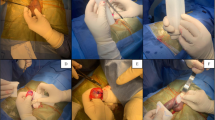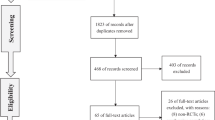Abstract
Udenafil is a selective phosphodiesterase type 5 inhibitor made available in recent years for the treatment of erectile dysfunction. Herein, we evaluated independent predictors of potency recovery in radical prostatectomy (RP) patients who underwent penile rehabilitation with udenafil 50 mg. One hundred and forty-three men who underwent RP were enrolled in a penile rehabilitation program using udenafil 50 mg every other day. The rate of regained potency in the study group was significantly higher compared with the recovery rate seen in patients who were not part of the penile rehabilitation program (41.3% vs 13.0%; P<0.001). On the multivariate Cox analyses, preoperative International Index of Erectile Function-5 scores (hazard ratio (HR), 1.049; P=0.040), alcohol consumption (HR, 2.043; P=0.020) and Gleason biopsy score (HR, 0.368; P=0.024) were independent preoperative predictors for potency recovery. Among post-RP variables, the use of robotic procedures (HR, 2.287; P=0.030) and pathologic stage (HR, 0.506; P=0.038) were significantly associated with potency recovery. This study identified predictive factors for the recovery of potency in patients undergoing penile rehabilitation with udenafil following RP. Our results could provide physicians with useful information for counseling RP patients and selecting optimal candidates for penile rehabilitation.
This is a preview of subscription content, access via your institution
Access options
Subscribe to this journal
Receive 8 print issues and online access
$259.00 per year
only $32.38 per issue
Buy this article
- Purchase on Springer Link
- Instant access to full article PDF
Prices may be subject to local taxes which are calculated during checkout

Similar content being viewed by others
References
Siegel R, Ma J, Zou Z, Jemal A . Cancer statistics, 2014. CA Cancer J Clin 2014; 64: 9–29.
Pu YS, Chiang HS, Lin CC, Huang CY, Huang KH, Chen J . Changing trends of prostate cancer in Asia. Aging Male 2004; 7: 120–132.
Jung KW, Won YJ, Kong HJ, Oh CM, Seo HG, Lee JS . Cancer statistics in Korea: incidence, mortality, survival and prevalence in 2010. Cancer Res Treat 2013; 45: 1–14.
Gallina A, Chun FK, Suardi N, Eastham JA, Perrotte P, Graefen M et al. Comparison of stage migration patterns between Europe and the USA: an analysis of 11 350 men treated with radical prostatectomy for prostate cancer. BJU Int 2008; 101: 1513–1518.
Welch HG, Albertsen PC . Prostate cancer diagnosis and treatment after the introduction of prostate-specific antigen screening: 1986-2005. J Natl Cancer Inst 2009; 101: 1325–1329.
Bechis SK, Carroll PR, Cooperberg MR . Impact of age at diagnosis on prostate cancer treatment and survival. J Clin Oncol 2011; 29: 235–241.
Cooperberg MR, Broering JM, Carroll PR . Time trends and local variation in primary treatment of localized prostate cancer. J Clin Oncol 2010; 28: 1117–1123.
Resnick MJ, Koyama T, Fan KH, Albertsen PC, Goodman M, Hamilton AS et al. Long-term functional outcomes after treatment for localized prostate cancer. N Engl J Med 2013; 368: 436–445.
Sanda MG, Dunn RL, Michalski J, Sandler HM, Northouse L, Hembroff L et al. Quality of life and satisfaction with outcome among prostate-cancer survivors. N Engl J Med 2008; 358: 1250–1261.
Mulhall JP . Defining and reporting erectile function outcomes after radical prostatectomy: challenges and misconceptions. J Urol 2009; 181: 462–471.
Walsh PC, Donker PJ . Impotence following radical prostatectomy: insight into etiology and prevention. J Urol 1982; 128: 492–497.
Walsh PC, Partin AW, Epstein JI . Cancer control and quality of life following anatomical radical retropubic prostatectomy: results at 10 years. J Urol 1994; 152: 1831–1836.
Patel VR, Coelho RF, Chauhan S, Orvieto MA, Palmer KJ, Rocco B et al. Continence, potency and oncological outcomes after robotic-assisted radical prostatectomy: early trifecta results of a high-volume surgeon. BJU Int 2010; 106: 696–702.
Quinlan DM, Epstein JI, Carter BS, Walsh PC . Sexual function following radical prostatectomy: influence of preservation of neurovascular bundles. J Urol 1991; 145: 998–1002.
Woo SH, Kang DI, Ha YS, Salmasi AH, Kim JH, Lee DH et al. Comprehensive analysis of sexual function outcome in prostate cancer patients after robot-assisted radical prostatectomy. J Endourol 2014; 28: 172–177.
Montorsi F, Brock G, Lee J, Shapiro J, Van Poppel H, Graefen M et al. Effect of nightly versus on-demand vardenafil on recovery of erectile function in men following bilateral nerve-sparing radical prostatectomy. Eur Urol 2008; 54: 924–931.
Padma-Nathan H, McCullough AR, Levine LA, Lipshultz LI, Siegel R, Montorsi F et al. Randomized, double-blind, placebo-controlled study of postoperative nightly sildenafil citrate for the prevention of erectile dysfunction after bilateral nerve-sparing radical prostatectomy. Int J Impot Res 2008; 20: 479–486.
Bannowsky A, Schulze H, van der Horst C, Hautmann S, Junemann KP . Recovery of erectile function after nerve-sparing radical prostatectomy: improvement with nightly low-dose sildenafil. BJU Int 2008; 101: 1279–1283.
Kovanecz I, Rambhatla A, Ferrini MG, Vernet D, Sanchez S, Rajfer J et al. Chronic daily tadalafil prevents the corporal fibrosis and veno-occlusive dysfunction that occurs after cavernosal nerve resection. BJU Int 2008; 101: 203–210.
Kovanecz I, Rambhatla A, Ferrini M, Vernet D, Sanchez S, Rajfer J et al. Long-term continuous sildenafil treatment ameliorates corporal veno-occlusive dysfunction (CVOD) induced by cavernosal nerve resection in rats. Int J Impot Res 2008; 20: 202–212.
Salem EA, Kendirci M, Hellstrom WJ . Udenafil, a long-acting PDE5 inhibitor for erectile dysfunction. Curr Opin Invest Drugs 2006; 7: 661–669.
Kim TE, Kim BH, Kim JR, Lim KS, Hong JH, Kim KP et al. Effect of food on the pharmacokinetics of the oral phosphodiesterase 5 inhibitor udenafil for the treatment of erectile dysfunction. Br J Clin Pharmacol 2009; 68: 43–46.
Menon M, Tewari A, Peabody J . Vattikuti Institute prostatectomy: technique. J Urol 2003; 169: 2289–2292.
Jeong W, Araki M, Park SY, Lee YH, Kumon H, Hong SJ et al. Robot-assisted laparoscopic radical prostatectomy in the Asian population: modified port configuration and ultradissection. Int J Urol 2010; 17: 297–300.
Ahn TY, Lee DS, Kang WC, Hong JH, Kim YS . Validation of an abridged Korean version of the International Index of Erectile Function (IIEF-5) as a diagnostic tool for erectile dysfunction. Korean J Urol 2001; 42: 535–540.
Hakimi AA, Blitstein J, Feder M, Shapiro E, Ghavamian R . Direct comparison of surgical and functional outcomes of robotic-assisted versus pure laparoscopic radical prostatectomy: single-surgeon experience. Urology 2009; 73: 119–123.
Patel VR, Sivaraman A, Coelho RF, Chauhan S, Palmer KJ, Orvieto MA et al. Pentafecta: a new concept for reporting outcomes of robot-assisted laparoscopic radical prostatectomy. Eur Urol 2011; 59: 702–707.
Zippe CD, Jhaveri FM, Klein EA, Kedia S, Pasqualotto FF, Kedia A et al. Role of Viagra after radical prostatectomy. Urology 2000; 55: 241–245.
Zippe CD, Kedia AW, Kedia K, Nelson DR, Agarwal A . Treatment of erectile dysfunction after radical prostatectomy with sildenafil citrate (Viagra). Urology 1998; 52: 963–966.
Raina R, Lakin MM, Agarwal A, Mascha E, Montague DK, Klein E et al. Efficacy and factors associated with successful outcome of sildenafil citrate use for erectile dysfunction after radical prostatectomy. Urology 2004; 63: 960–966.
Feng MI, Huang S, Kaptein J, Kaswick J, Aboseif S . Effect of sildenafil citrate on post-radical prostatectomy erectile dysfunction. J Urol 2000; 164: 1935–1938.
Briganti A, Salonia A, Gallina A, Chun FK, Karakiewicz PI, Graefen M et al. Management of erectile dysfunction after radical prostatectomy in 2007. World J Urol 2007; 25: 143–148.
Paick JS, Kim SW, Yang DY, Kim JJ, Lee SW, Ahn TY et al. The efficacy and safety of udenafil, a new selective phosphodiesterase type 5 inhibitor, in patients with erectile dysfunction. J Sex Med 2008; 5: 946–953.
Lee CH, Shin JH, Ahn GJ, Kang KK, Ahn BO, Yoo M . Udenafil enhances the recovery of erectile function and ameliorates the pathophysiological consequences of cavernous nerve resection. J Sex Med 2010; 7: 2564–2571.
Briganti A, Gallina A, Suardi N, Capitanio U, Tutolo M, Bianchi M et al. Predicting erectile function recovery after bilateral nerve sparing radical prostatectomy: a proposal of a novel preoperative risk stratification. J Sex Med 2010; 7: 2521–2531.
Muller A, Parker M, Waters BW, Flanigan RC, Mulhall JP . Penile rehabilitation following radical prostatectomy: predicting success. J Sex Med 2009; 6: 2806–2812.
Tal R, Alphs HH, Krebs P, Nelson CJ, Mulhall JP . Erectile function recovery rate after radical prostatectomy: a meta-analysis. J Sex Med 2009; 6: 2538–2546.
Ko WJ, Truesdale MD, Hruby GW, Landman J, Badani KK . Impacting factors for recovery of erectile function within 1 year following robotic-assisted laparoscopic radical prostatectomy. J Sex Med 2011; 8: 1805–1812.
Garcia FJ, Violette PD, Brock GB, Pautler SE . Predictive factors for return of erectile function in robotic radical prostatectomy: case series from a single centre. Int J Impot Res 2014; 27: 29–32.
Kang DI, Chung JI, Ha HK, Min K, Yoon J, Kim W et al. Korean prostate cancer patients have worse disease characteristics than their American counterparts. Asian Pac J Cancer Prev 2013; 14: 6913–6917.
Lee AC, Ho LM, Yip AW, Fan S, Lam TH . The effect of alcohol drinking on erectile dysfunction in Chinese men. Int J Impot Res 2010; 22: 272–278.
Chew KK, Bremner A, Stuckey B, Earle C, Jamrozik K . Alcohol consumption and male erectile dysfunction: an unfounded reputation for risk? J Sex Med 2009; 6: 1386–1394.
Ficarra V, Novara G, Ahlering TE, Costello A, Eastham JA, Graefen M et al. Systematic review and meta-analysis of studies reporting potency rates after robot-assisted radical prostatectomy. Eur Urol 2012; 62: 418–430.
Kim SC, Song C, Kim W, Kang T, Park J, Jeong IG et al. Factors determining functional outcomes after radical prostatectomy: robot-assisted versus retropubic. Eur Urol 2011; 60: 413–419.
Lewis RW, Fugl-Meyer KS, Corona G, Hayes RD, Laumann EO, Moreira ED Jr et al. Definitions/epidemiology/risk factors for sexual dysfunction. J Sex Med 2010; 7: 1598–1607.
Edwards B, Clarke V . The psychological impact of a cancer diagnosis on families: the influence of family functioning and patients' illness characteristics on depression and anxiety. Psychooncology 2004; 13: 562–576.
Briganti A, Gallina A, Salonia A, Farina E, Zanni G, Rigatti P et al. Reliability of classification of erectile function domain of the international index of erectile function in patients affected by localized prostate cancer who are candidates for radical prostatectomy. Urology 2005; 66: 1140; author reply 1140–1141.
Salonia A, Zanni G, Gallina A, Sacca A, Sangalli M, Naspro R et al. Baseline potency in candidates for bilateral nerve-sparing radical retropubic prostatectomy. Eur Urol 2006; 50: 360–365.
Papadoukakis S, Kusche D, Stolzenburg JU, Truss MC . Reconsidering the use of the International Index of Erectile Function questionnaire in evaluating the preoperative erectile function status of patients undergoing radical prostatectomy. BJU Int 2007; 100: 368–370.
Salonia A, Gallina A, Briganti A, Zanni G, Sacca A, Deho F et al. Remembered International Index of Erectile Function domain scores are not accurate in assessing preoperative potency in candidates for bilateral nerve-sparing radical retropubic prostatectomy. J Sex Med 2008; 5: 677–683.
Acknowledgements
This research was supported by the Bio and Medical Technology Development Program of the National Research Foundation (NRF) funded by the Ministry of Science, ICT and Future Planning (NRF-2014M3A9D3033887) and by the National Research Foundation of Korea (NRF) grant funded by the Korea government (MSIP) (No. NRF-2014R1A2A1A09006983).
Author information
Authors and Affiliations
Corresponding author
Ethics declarations
Competing interests
The authors declare no conflict of interest.
Additional information
Supplementary Information accompanies the paper on International Journal of Impotence Research website
Rights and permissions
About this article
Cite this article
Kim, TH., Ha, YS., Choi, S. et al. Factors predicting outcomes of penile rehabilitation with udenafil 50 mg following radical prostatectomy. Int J Impot Res 28, 25–30 (2016). https://doi.org/10.1038/ijir.2015.28
Received:
Revised:
Accepted:
Published:
Issue Date:
DOI: https://doi.org/10.1038/ijir.2015.28



